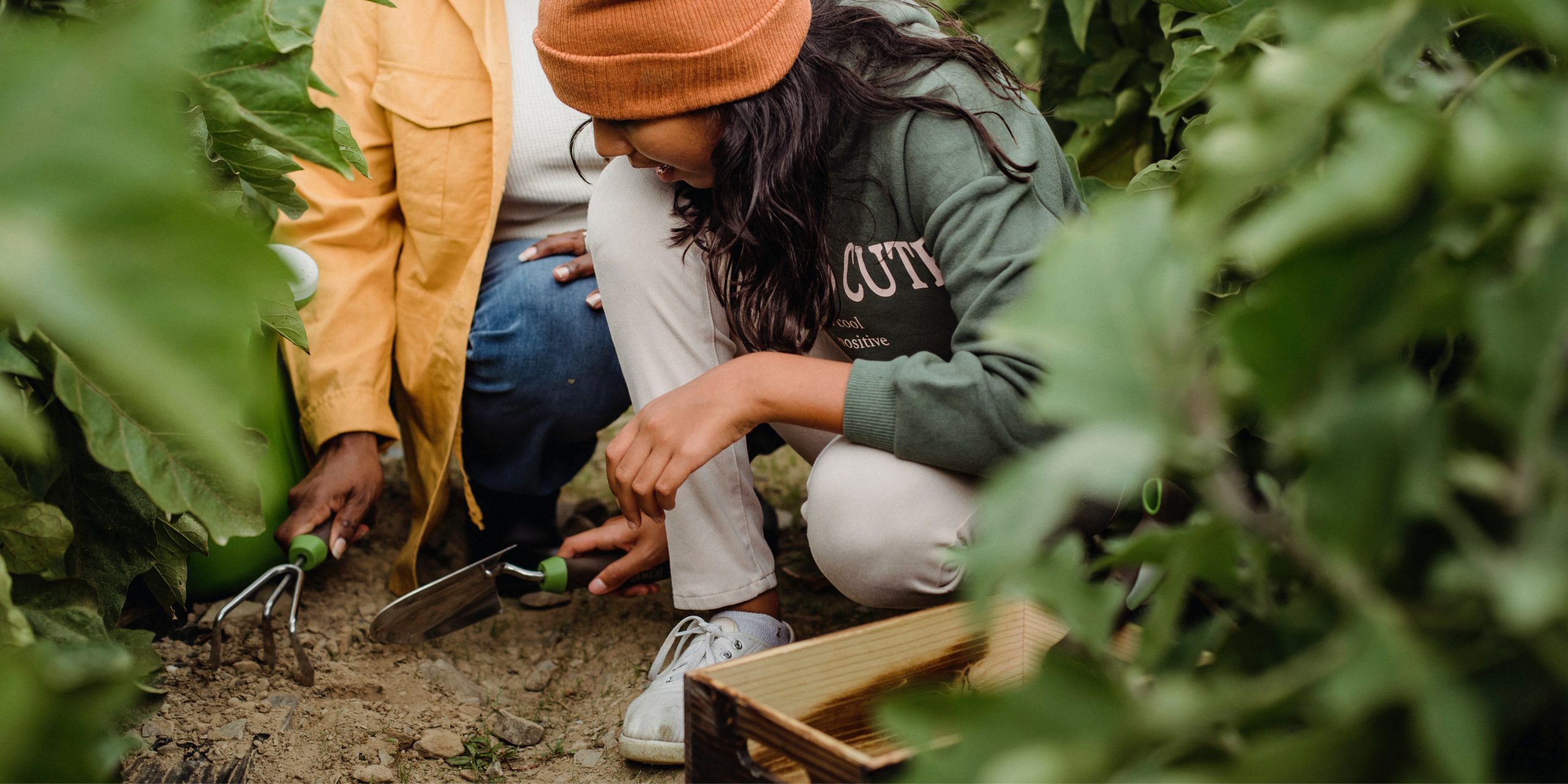7 Simple Tips to Grow Your Own Vegetable Garden
Interested in growing your own vegetable garden but not sure where to start? Whether you’re a novice or have some experience with gardening, it’s not difficult to learn the basics of how to create one. What’s most beneficial about planting your own fruits and vegetables is that you can feel good about using them in the foods you serve your family every day. Most would agree that gardening is also a fulfilling hobby that will give you many hours of enjoyment. There is nothing quite like growing your own vegetables with all the aromatic flavors and vibrant colors, not to mention all the health benefits you’ll receive. Serving your family garden-to-table organic food is one of the keys to living a healthy lifestyle. In April we celebrate Lawn and Garden Month and National Gardening Day on April 14th #nationalgardeningday. So, if you’ve never planted a vegetable garden and can’t wait to get your hands in the spoil, here are some great tips to get you started:
1. Find a Sunny Location
Vegetables thrive best when basking in lots of sunlight—most will grow well with at least 6 to 8 hours of direct sun each day. Even though some leafy vegetables like lettuce may do fine in some shade, you’ll still want to give the entire garden as much sun as possible.
Smart Tip:Try a container garden if a backyard vegetable garden seems too ambitious. You can plant your vegetables and herbs in containers and place them directly on a terrace or patio where they will get the most sun.
2. Consider the Size of Your Garden
If you’re a beginner, it’s best to start small. Make sure your vegetable garden is large enough to ensure the proper growth of your plants. Consider how much space each vegetable needs to grow by following the spacing guide directions on the seed packets or plantings. You can also check out the “Old Farmer’s Almanac,” where you’ll find an excellent online garden planning tool.
Smart tip: Climbing produce like tomatoes, cucumbers and winter squash do well on vertical supports like an A-frame trellis.
3. Proximity to a Water Source
This tip is essential, especially during the first few weeks of planting. To help the seeds germinate properly, you’ll need to water them frequently to ensure they produce strong roots. Once your plants are established, you can water them less frequently, like every few days.
Smart Tip: Water sources set on timers can help you save money and ensure your vegetable garden receives the optimal drink at the right times during the day.
4. Soil that Works Best
To grow a successful vegetable garden, you must first start with great soil. You can buy a specially prepared potting mix for vegetable gardens at your local garden center or save money and make your own. Experts say a good gardening soil should be loose, not be too sandy or heavy like clay, and contain a combination of potting soil, compost, and organic matter that helps the roots of the plant retain water and remain aerated.
Smart Tip: Prepare your own compost with a mixture of vegetable scraps, coffee grounds and eggshells. It’s easy to do and eco-friendly, too..
5. Gardening Tools to Use
Working with the right gardening tools is necessary to ensure your vegetable garden thrives. You’ll need:
- Gardening Gloves—available in fun colors, gardening gloves are necessary to protect your hands from the soil, sharp stems or vines. Make sure they are water-resistant and not too tight.
- Trowel—an essential tool for every gardener, a trowel acts as an extension of your hand, making digging holes, mixing potting soil and planting your seeds much easier.
- Garden Fork or Rake—you’ll need to keep these tools handy to loosen the soil and pull up any surrounding weeds.
- Sharp Shooter—this tool is similar to a trowel, but creates more precise, deeper holes for your seeds and plantings.
- Hand Pruners—this is tool is an essential item in every gardener’s toolbox. Pruners are used to trim each plant, so it remains healthy and does not overgrow. They are also used to cut thorny or dead branches away.
- Spade or Hoe—these handy digging tools come in many sizes and help you prepare your plant beds. A wide flat hoe is recommended for digging a vegetable garden.
- Watering Wand—a watering can cover a larger area, but this handy little tool allows you to pinpoint precisely the area you want to receive water.
Smart Tip: Use a wheelbarrow or garden cart to easily transport your soil, plants and gardening supplies.
6. Select the Right Veggies
Kids can be picky eaters when it comes to eating vegetables. But allowing them to select the ones they would like to see grown may encourage them to try new varieties. You should always plant the fruits, vegetables, and herbs you are most likely like to eat and use in your everyday cooking.
Smart tip: The best vegetables to start a vegetable garden with include carrots, beets, zucchini, peppers, peas, cherry tomatoes, spinach and lettuce. These are considered among the easiest to grow.
7. How to Get Rid of Small Pests and Bugs
Gardeners and farmers everywhere share the age-old problem of trying to keep pests from eating what they’ve grown. While there is no tried-and-true way to accomplish this, expert gardeners suggest trying things like spreading eggshells and coffee grounds beneath plants, or planting aromatic herbs like citronella, mint, and fennel, which have been known to keep insects away. Also, making an effort to control weeds will help keep the bugs at bay.
Smart Tip: A short mesh fence may help deter unwanted small animals like rabbits or squirrels from eating your fruits and vegetables.
Your Garden Oasis Awaits
Have you always dreamed of owning a home with a backyard where you could spend hours planting and tending to your garden? Do you long to see the vibrant colors and taste the freshness of the vegetables you’ve grown? Celebrating your home is what Premier Mortgage Associates is all about, and that’s why our experienced loan officers are always ready to help you finance the perfect home where you can build your garden oasis! We have a variety of different loan products that may fit your needs.
Get Preapproved Today
Our easy preapproval process gives you the preliminary answers you need to qualify, so you can borrow the maximum amount you need to purchase your dream home.
Sign Up With Us
Get important updates on our competitive mortgage rates, industry news, and other information to help you along in your homebuying journey.
NQM Funding, LLC (NMLS # 75597) dba - Premier Mortgage Associates; Villa Home Loans; Texas: Consumers wishing to file a complaint against a mortgage company or a licensed residential mortgage loan originator should complete and send a complaint form to the Texas department of savings and mortgage lending, 2601 North Lamar, Suite 201, Austin, Texas 78705. Complaint forms and instructions may be obtained from the department’s website at www.sml.texas.gov. A toll-free consumer hotline is available at 1-877-276-5550. The department maintains a recovery fund to make payments of certain actual out-of-pocket damages sustained by borrowers caused by acts of licensed residential mortgage loan originators. A written application for reimbursement from the recovery fund must be filed with and investigated by the department prior to the payment of a claim. For more information about the recovery fund, please consult the department’s website at www.sml.texas.gov - nmlsconsumeraccess.org






